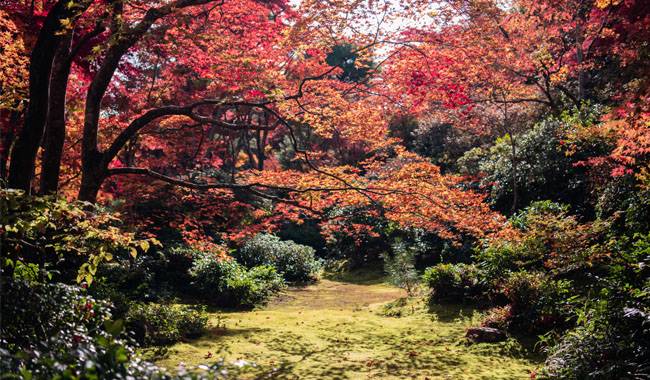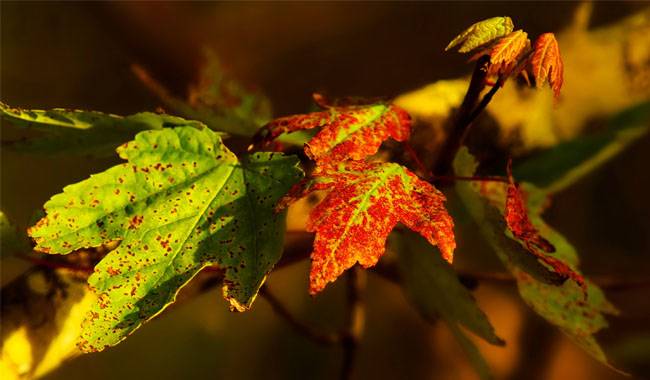
If you enter an unpruned garden at night, you may be startled by stunted trees, some of whose shoots have long since dried up and are no longer of any value, or which have grown into the shape of wolves that is, stiff, straight shoots that grow upward, drawing water and nutrients from the soil.
Such shoots can be bent backward to become horizontal and fixed in that position, or they can be cut off. The garden just needs hygienic pruning. Such pruning in autumn is mainly aimed at cleaning and purifying, removing the main stem, shoots, and perhaps even entire branches that are no longer needed by the plant.
Today, let’s take a look at the subtleties and characteristics of prune in the fall.
PURPOSE OF HYGIENIC PRUNING
It should be clearly understood that hygienic pruning is not only carried out on fruit trees. It affects all ornamental species and berry shrubs. The only thing to be wary of here is the remnant raspberry, as it produces shoots in the first year and fruits in the second (if you cut off the shoots, you won’t get any fruit).
With hygienic pruning, a simple change in the garden occurs when pruning shears or a garden saw are in the hands of an experienced person. Also, for best results, it is a good idea to bring a garden beer or garden paint and alcohol with a rag.
After cutting, be sure to cover the area with garden varnish or garden paint, going from tree to tree or shrub to shrub, and wipe the short sword and garden saw blade with an alcohol-soaked cloth so that disease is not transferred from sick plants to healthy ones.
Important: When pruning, be sure to cut off “ring” shoots, leaving no stumps, cut shoots as thick as your finger with the shears, and cut thicker shoots with the garden saw. If an old or diseased shoot must be removed, first remove all knots from the top to greatly reduce its weight, then file it under and over. In this way, it will break evenly and not form a large and very painful indentation in the bark of the plant, which will take a long time to heal.
ADVANTAGES OF FALL PRUNING
The advantages are obvious: this pruning process removes broken branches, dry branches, and branches that have grown deep into the canopy. In doing so, it will improve the growth and development of these plants and literally prolong their youthfulness. There is no need to get upset about cutting offshoots, twigs, and branches that have withered, even though they may be very large or shoots, but deep into the canopy, which often happens in currants and leads to dense bushes.
Do not forget the common raspberry: its sturdy shoots should be removed and cut them off at ground level.
In general, in the autumn sanitary pruning, whether of trees or bushes, you should definitely cut off all the old shoots (black in currants), as well as the unnecessary ones (competing shoots or those intertwined), infected by pests and diseases, damaged during harvest or soil treatment. All this will improve the immunity of the plants and activate their vigor.
TIMING OF PRUNING
Neglected, overgrown spring-flowering shrubs often need extensive pruning to rejuvenate or renew the plants. Late winter or early spring (March or early April) is the best time to rejuvenate large, overgrown shrubs. Heavy pruning in late winter or early spring will reduce or eliminate 2 or 3 years of floral display. However, rejuvenating pruning will restore the health of the shrub.
It is okay if most or all of the leaf thinning has fallen off at the time of pruning. This means that you have to carry out pruning work in a timely manner. As for temperature, sanitary pruning (whether it involves trees or shrubs) should be done during a frost when the temperature outside the window does not fall below 41°F (5°C).
Why? The point is that if sanitary fall pruning is done during a severe frost, the tissues of trees or shrubs that have had time to freeze by then maybe so fragile that they can literally break off, drop pieces and cause very serious damage to plants of all species.
HYGIENIC GARDEN PRUNING
So let’s start with a hygienic pruning of the garden and give examples of shoots and branches that must necessarily be removed.
These are, of course, first of all, the shoots that have withered. But here it is necessary to prune so as to slightly, literally, on about 1 inch to capture and healthy tissue, if they are, and if not, saw out the bottom and cut with a garden varnish treatment.
Next, the shoots that were previously exposed to strong negative temperatures and frostbite formation should be disinfected by pruning. In this case, cut off all the damaged tissue at the base of the scaffold shoot and all the small shoots that have grown. By doing this, you can try to re-establish the shoot’s conduction system and the complete, healthy part of the plant will begin to grow.
Prune all shoots that are deep into the crown, causing the crown to thicken, drastically reducing the intensity of the pesticide treatment and shifting the harvest to the periphery of the crown. If they are not removed, the center of the crown will become lifeless and just a breeding ground for infection. Flowering intensity will be reduced, fruit ripening may even be inhibited, and pests and diseases will become rampant.
Next, all vertical shoots should be removed or bent 90 degrees, about which it was mentioned above that they are wolf, greasy shoots from which there is no benefit, but only depletion of nutrients in the soil.
All shoots that are too angled should be tied to the trunk in some way or simply pulled off, otherwise, they will break and the bark will be heavily scratched, i.e. the plant will be injured.
Obviously, all shoots with pests and various diseases must be removed and burned outside the site to avoid spreading infection on healthy plants.
Competing shoots, especially those that start rubbing against each other when blown by a gust of wind. The thickest, best-developed shoots should be selected from these, and the second shoot must be removed by cutting it into rings.
Broken shoots – nothing can be done about them here. They can be caused by various reasons – unsuccessful passage of machinery, lack of careful harvesting, development of wind or certain diseases, lack of certain nutrients. Understandably, after the removal of large branches, you may not have enough garden varnish. Then the garden paint comes into play.
All old branches, which do not bear fruit every year, should also be cut off and replaced with nearby younger branches growing in the same direction.

HYGIENIC PRUNING OF SHRUBS
In fact, it does not differ much from the hygienic pruning of trees, which has been covered somewhat above in our material.
Thus, if we are talking about red and black currants, it is best to remove shoots warped by aphids, those with bloated buds, i.e. infected with bud mites, or those with swollen shoots, it is generally viral disease. Pruning can be done in October.
On common raspberries, cut off all knotty shoots, broken, too thick bushes, leaving the strongest and developed ones. The time for pruning is October-November.
On cranberries you should try to reduce the growth of the tree, for which it is better to choose more low-lying shoots from the bush, but direct them upwards, those at the very top – cut them off from the base, otherwise, it will become increasingly difficult to collect the harvest over the years. The pruning period is in November.
The same applies to buckthorn: some of the higher shoots can be cut off, leaving room for the lower layer of shoots. I will cut it in October.
Iris, once every five years, you can cut at your waist level to remove all the shoots, from which point it will start branching, making the next year’s crop larger and lower in height. Pruning is done from September to November.
Like pruning and begonias, if you remove the central conductor, then this bushy tree will start to really collapse, it will not grow in height and its shoots will become very easy to harvest. Pruning can be done in November.
Currants – here, first of all, pay attention to the shoots that are located directly on the ground. It is impossible to collect berries from such shoots, they are often dirty, or worse, infected with phylloxera, so this shrub should be raised slightly, forming a kind of trunk, so that the berries do not get so dirty.
Of course, you also need to remove all broken and dry shoots, which are no longer needed by the gooseberry. Pruning is done at the end of October.
Cherry – It also needs to be pruned hygienically to limit the height. In addition to removing all broken, dry, and diseased shoots, it is necessary to cut back the central conductor every year, which often causes bird cherries to rise into the sky and may result in a bird cherry harvest that cannot be collected at all. Pruning is carried out in mid-October.
Among the smaller shrubs can be distinguished the honeysuckle, whose canopy grows extremely quickly with an excess of shoots and therefore needs to be cleared annually, otherwise in the center of a large honeysuckle bush, moths and wasps will settle down and the harvest will start to gather on the periphery of the canopy, where it actually does not or will be very low. Pruning is done in October.
It is necessary to prune and multiflora lily or hume, this plant is new and its shoots are often frozen, first of all, it is necessary to pay attention to them, sometimes they remain until autumn, only in autumn the owner understands that this should not be done and removes the tips of the frozen shoots.
In addition, it is necessary to pay attention to the crown of the hummus field. Remove all broken and dry shoots, cut off competitors, bring the harvest to the entire surface of the crown, and not only on its periphery. Pruning is carried out in October.
Silkworm often freezes in winter, but then recovers and starts to grow. Its wilted bud tips remain with the unthinking owner through the winter. This is not right, they can become infected and the tips of these shoots must be removed.
In addition to this, the various shots of the mulberry tree grow very fast and sanitary cleaning should be reduced to remove shoots that are too short, which serve to accumulate leaf mass and, in fact, play a very small role in the formation of the crop. Pruning is carried out in October.
Rose hips also require varietal pruning: you need to isolate them by removing the main branches that are more than five years old and do not let them get bogged down. Otherwise, over time, the rosehips will curl up into a ball, the crop will be many times smaller, and various pests will settle in the center. Prune in October.
Blueberry shoots are quite fragile and require annual hygienic pruning with the aim of removing these shoots. Pruning is done in October.
So much for the simple intricacies of hygienic pruning.







